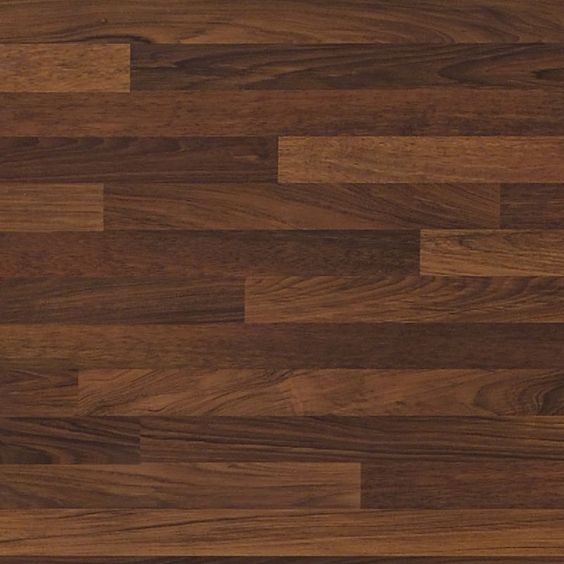When it comes to creating a truly captivating and luxurious space, few flooring options can match the timeless elegance of parquetry. With its intricate patterns and impeccable craftsmanship, parquetry flooring has been adorning homes and grand palaces for centuries. From the elaborate designs seen in 17th-century French chateaus to the sleek geometric patterns found in modern interiors, parquetry effortlessly combines artistry with functionality. In this article, we will delve into the fascinating world of parquetry flooring, exploring its rich history, enduring appeal, and why it continues to be a symbol of sophistication and refinement in interior design.
The lasting allure of parquetry flooring.
Parquetry flooring, with its intricate patterns and timeless allure, continues to captivate homeowners and designers alike. The art of parquet dates back centuries, adding a touch of elegance and sophistication to any space. Its enduring popularity can be attributed to its ability to transform ordinary rooms into extraordinary spaces.
What sets parquetry apart is not just its visual appeal but also the craftsmanship that goes into creating these intricate patterns. Each piece of wood is carefully selected and arranged to form geometric designs that can be simple or elaborate, depending on the desired effect. This attention to detail adds depth and character to a room, transforming it from plain to exquisite.
Another reason for the lasting allure of parquetry flooring is its versatility. Whether used in traditional or modern interiors, parquet floors effortlessly blend in and complement any style. From classic herringbone patterns that exude timeless charm to bold chevron designs that make a statement, parquetry offers endless possibilities for customization.
Moreover, unlike other types of flooring, parquet is durable and long-lasting when properly maintained. With regular care and maintenance, a parquet floor can retain its beauty for decades – even centuries – making it not only an aesthetically pleasing choice but also a practical one.
In conclusion, the lasting allure of parquetry flooring lies in its ability to add elegance and sophistication while bringing depth and character at the same time. Its craftsmanship captures the eye with intricately arranged patterns while seamlessly blending into any interior style.
History: Origins and evolution of parquetry.
Throughout history, parquetry has been a symbol of elegance and luxury. Its origins can be traced back to ancient civilizations such as Egypt and Mesopotamia, where intricate wooden patterns were used to adorn temples and palaces. The art of parquetry then spread throughout Europe during the Renaissance period, with French artisans perfecting the craft.
Parquetry evolved over time, with different techniques and designs being developed. One notable advancement was the introduction of marquetry in the 17th century, which involved using different types of wood veneers to create decorative patterns on furniture surfaces. This technique captured the attention of European nobility, who embraced it as a way to showcase their wealth and status.
As the Industrial Revolution took hold in the 19th century, parquetry became more accessible to the masses. Traditional hand-crafted methods were replaced by machine-made production techniques, making it easier and more affordable for homeowners to incorporate this elegant flooring style into their homes. Today, parquetry continues to be a popular choice for those seeking timeless beauty and sophistication in their interiors.
In conclusion, understanding the origins and evolution of parquetry reveals its enduring appeal throughout history. From its ancient beginnings as an ornamental art form in royal residences to its widespread availability today, this unique flooring style has stood the test of time while continuing to captivate homeowners with its elegant patterns and rich heritage.
Design: Intricate patterns and creative possibilities.
With parquetry flooring, the design possibilities are endless. The intricate patterns and creative combinations that can be achieved with this timeless technique are truly awe-inspiring. Whether it’s a classic herringbone pattern or a bold geometric design, parquetry flooring brings an element of sophistication and elegance to any space.
One of the most intriguing aspects of parquetry is the level of detail that can be achieved. Each piece of wood is carefully selected, cut, and placed to create a seamless and captivating pattern. This attention to detail not only adds visual interest but also enhances the overall durability and longevity of the floor.
What sets parquetry apart from other flooring options is its ability to showcase creativity in design. From chevron designs that play with angles and directions to intricate mosaics that bring together contrasting colors, there are endless opportunities for personal expression and customization. Parquetry offers a chance for homeowners to make a unique statement with their flooring choices, bringing artistry into their daily lives.
Materials: Types of wood used in parquetry flooring.
One of the most fascinating aspects of parquetry flooring is the variety of wood types used to create these masterpieces. Each type of wood brings its own unique characteristics and beauty, adding depth and personality to any space. Oakwood is a popular choice for its durability and versatility. With its warm hues and swirling grain patterns, oak adds a timeless elegance to any room. Another sought-after wood for parquetry flooring is walnut. Known for its rich dark brown color and smooth texture, walnut creates an opulent feel in any space.
For those seeking a more exotic appeal, teakwood offers a stunning option. Teakwood is known for its golden tones and lustrous finish, making it an ideal choice for creating striking patterns in parquetry flooring design. If you prefer a lighter aesthetic, maple can be the perfect choice with its light cream color and fine grain pattern that adds a touch of sophistication to any room.
Overall, the selection of wood used in parquetry flooring allows homeowners to truly customize their spaces according to their preferences. Whether you choose oak for its timeless elegance or teakwood for its exotic allure, these various wood types add character and lasting beauty that will endure through generations.
Installation: Techniques for a flawless finish.
When it comes to installing parquetry flooring, attention to detail is key. Achieving a flawless finish requires skill and precision, as well as knowledge of the right techniques. One such technique is the ‘floating’ installation method, where individual parquet pieces are connected together without any adhesive or nails. This not only allows for easy replacement of damaged pieces but also ensures a seamless look throughout the floor. Another technique is called the ‘glue-down’ method, where each piece of parquet is affixed directly to the subfloor using a strong adhesive. This technique requires careful planning and precise alignment to create an impeccable finish.
In addition to selecting the right installation method, proper acclimatization of the parquetry flooring before installation plays a crucial role in achieving a flawless finish. Parquet wood has a tendency to expand or contract depending on its moisture content and temperature. Consequently, it’s important to allow ample time for the flooring material to adapt to its environment before installation. This can be done by storing the planks in their packaging in the room where they will ultimately be installed for at least 48 hours prior to commencing installation.
Lastly, paying close attention to sanding and finishing techniques can greatly contribute towards attaining that flawless final look. The process often involves multiple passes with different grits of sandpaper followed by meticulous application of stains or varnishes for protection and aesthetic enhancement.
Maintenance: Tips for preserving the beauty of parquetry.
One of the key aspects of parquetry flooring is its timeless elegance. With its intricate patterns and exquisite craftsmanship, parquetry adds a touch of sophistication to any space. However, to ensure that this beauty lasts for years to come, proper maintenance is crucial.
Regular cleaning is essential for preserving the original luster of parquet floors. Start by removing loose dirt and debris using a soft-bristle broom or vacuum cleaner with a brush attachment. Avoid using abrasive cleaners or excessive water, as these can damage the delicate surface. Instead, opt for specialized wood floor cleaning products or mild soap diluted in warm water.
In addition to regular cleaning, it’s important to take preventive measures to protect your parquet flooring from wear and tear. Place doormats at entrances and encourage everyone to wipe their feet before entering the room. Also, consider using felt pads or furniture coasters under heavy items like furniture legs to prevent scratches. Lastly, avoid dragging heavy objects across the floor as this can cause deep gouges in the wood.
By following these simple maintenance tips, you can ensure that the beauty of your parquet flooring remains enchanting for years to come. Regular cleaning and preventive measures will not only preserve its elegance but also extend its lifespan so you can continue enjoying the timeless charm it brings to your home or office space.





Leave a Reply